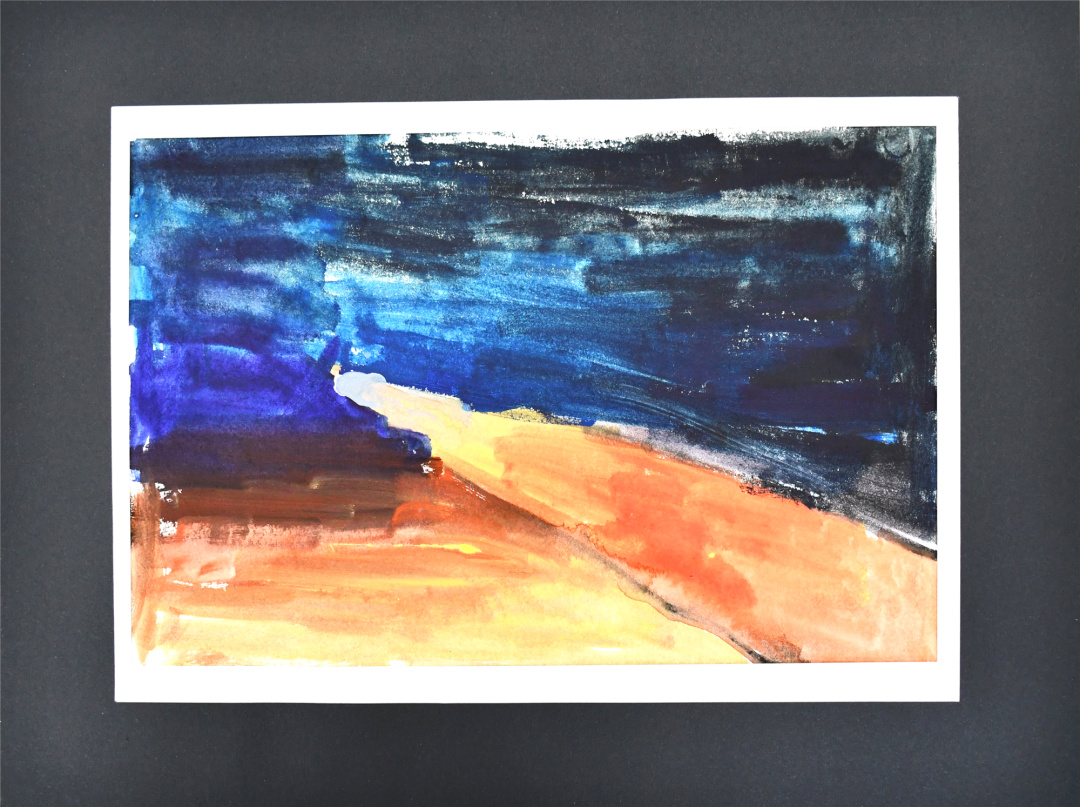OCIS国 际 艺 术课程包括
英文视 觉 艺 术 、 音 乐 、 戏 剧
International Arts (Visual Art, Music, Drama)
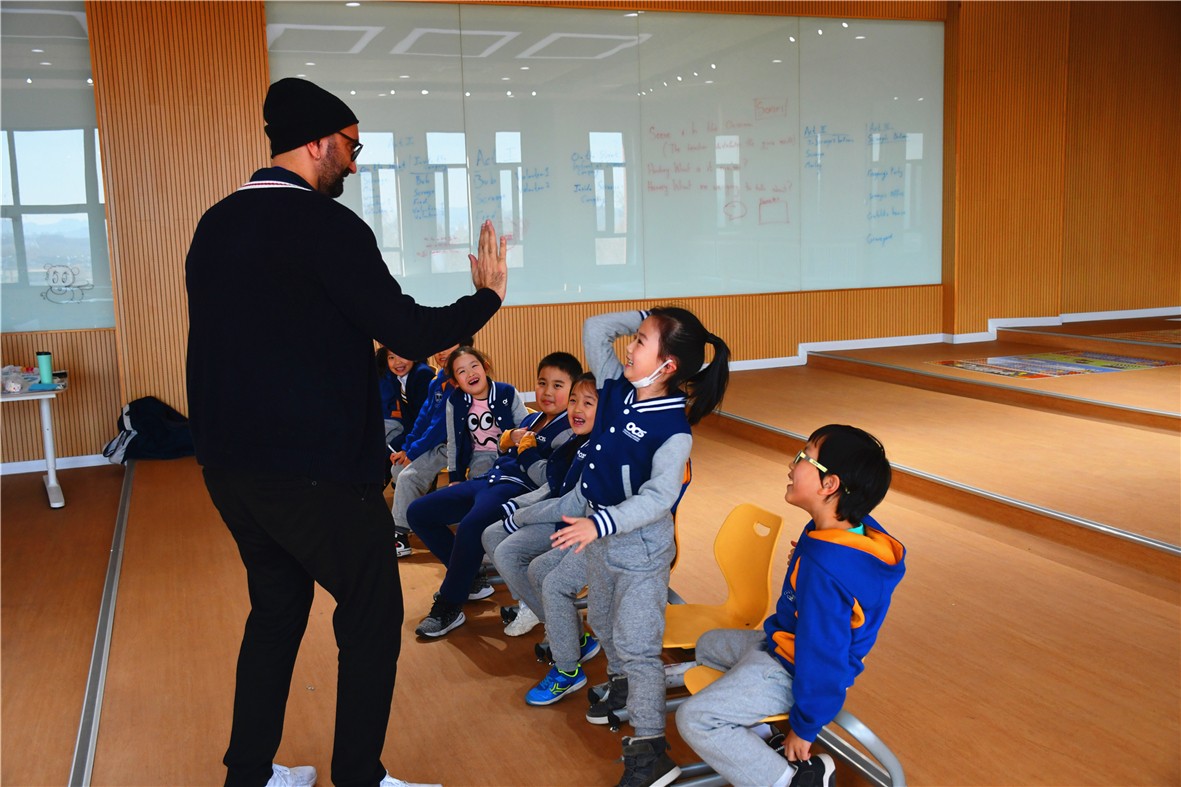
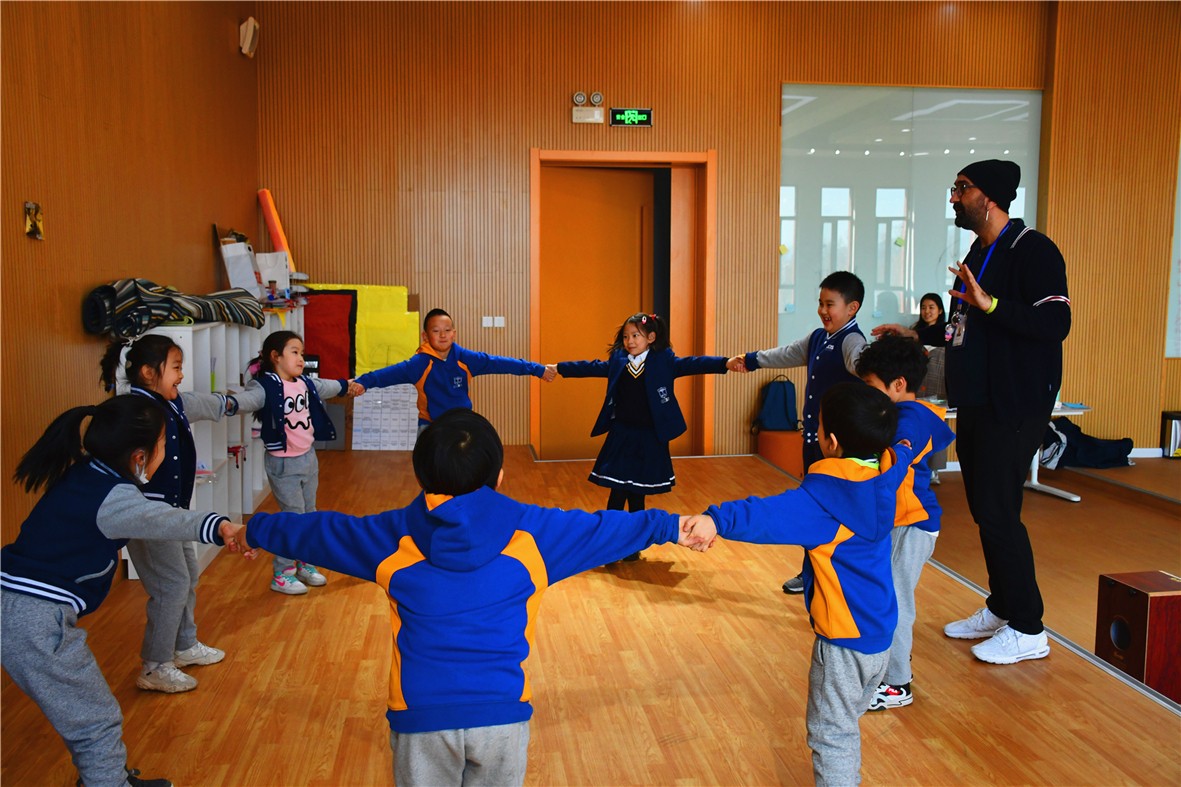

OCIS
Primary Visual Arts
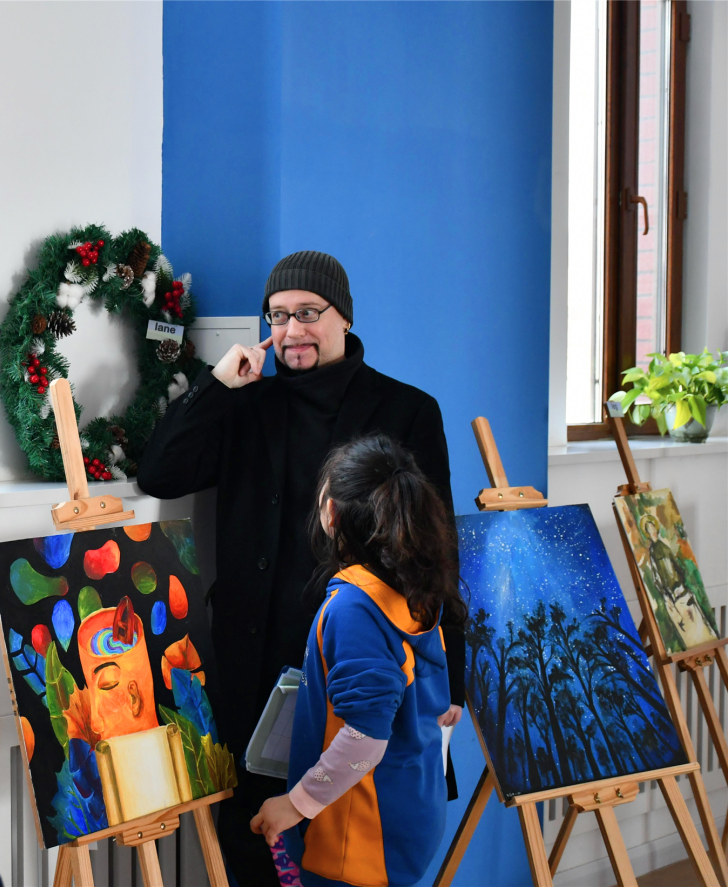
WHAT'S ART?
WHY
WE MAKE ART?
Stein-Arne With
Primary Visual Arts Teacher
小学部视觉艺术教师
B.A (hons) in Fine Arts.
Working as an artist, writer and teacher in both Visual/Fine Arts and Music in Norway and England.
Won the Outstanding Student Award while in University.
美术(荣誉)学士学位。
在挪威和英格兰担任视觉/美术和音乐方面艺术家/作曲家/教师。
在校期间获得优秀学生奖。
What is art?
艺术是什么?
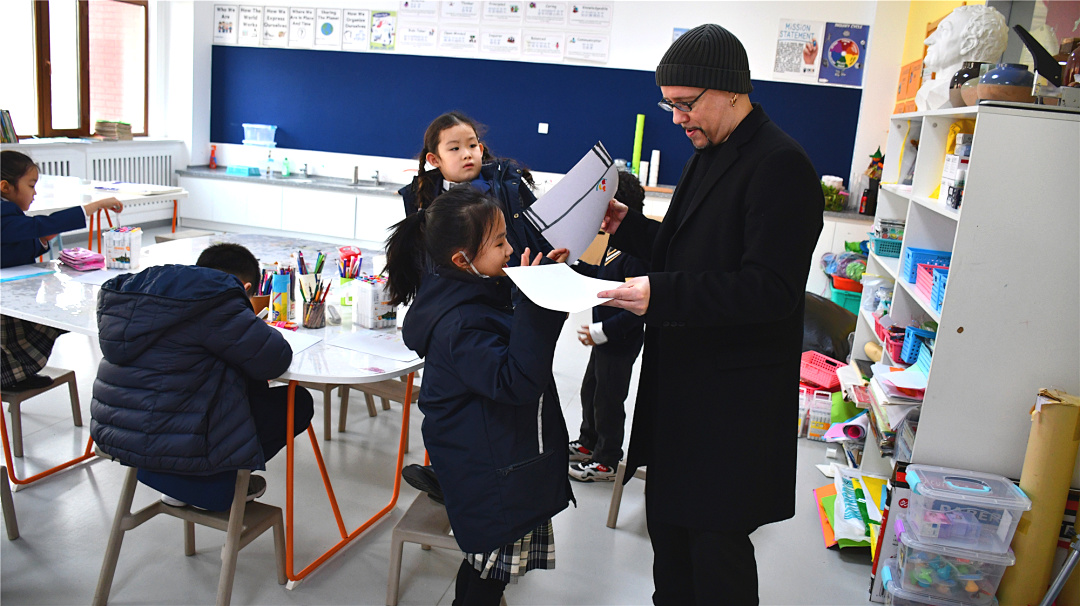
VISUAL ART
“Art is the activity by which a person, having experienced an emotion, intentionally transmits it to others”
Leo Tolstoy
“艺术是一种人经历了某种情感后有意地将其传播给他人的活动”.
列夫·托尔斯泰
Art is about communication
艺术有关沟通
(Communication), from the Latin word communis or common: a process by which information is exchanged between individuals through a common system of symbols, signs or behavior, or a technique for expressing ideas effectively.
沟通(Communication),来自拉丁语communis或common:指通过常见的符号、行为或技术在个人之间交换信息、有效表达思想的过程。

With this definition we can say that ART IS A VISUAL LANGUAGE,where every brushstroke in a painting might be seen as a letter in a word, every angle in a sculpture might be seen as a word in a sentence, and every object in an installation might be seen as a sentence in the story the artist wants to communicate.
有了这个定义,我们可以说艺术是一种视觉语言。绘画中的每一个笔触都可以看作一个单词中的字母,雕塑中的每个角度都可以看作一个句子中的单词,而展览中的每个对象都可以看作是艺术家想要的沟通的句子。
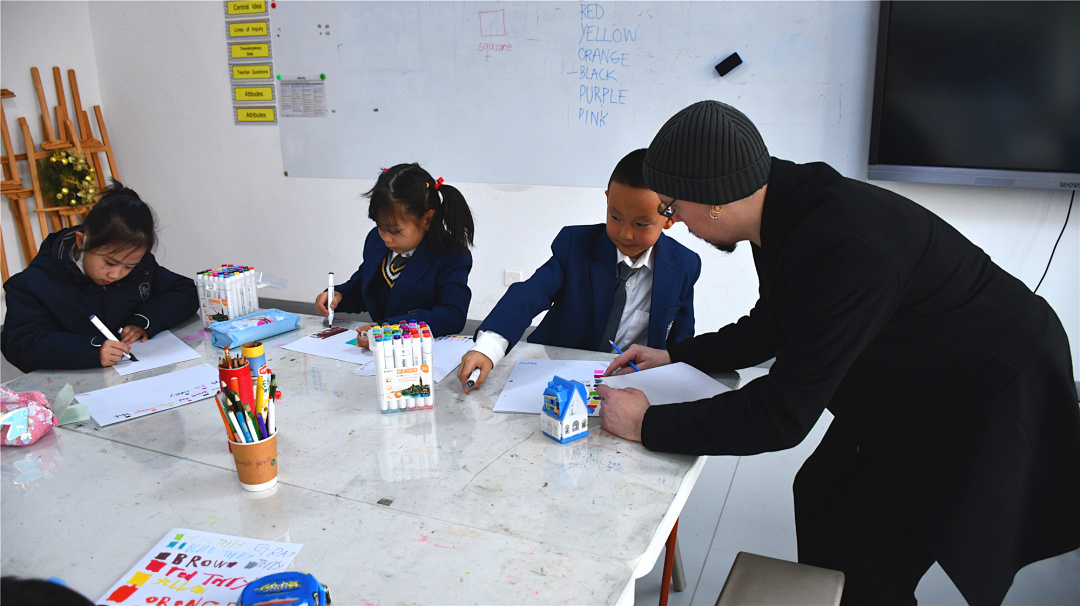
Art is a universal form of expression, as elemental as speaking or singing. When creating it is not just about drawing or painting something beautiful, but the possible creation of something profound and meaningful.
艺术是一种通用的表达形式,无论是说话还是唱歌,都是至关重要的。创作艺术不仅仅是关于绘画一些美丽的东西,而是可能会创造出一些有意义的东西。


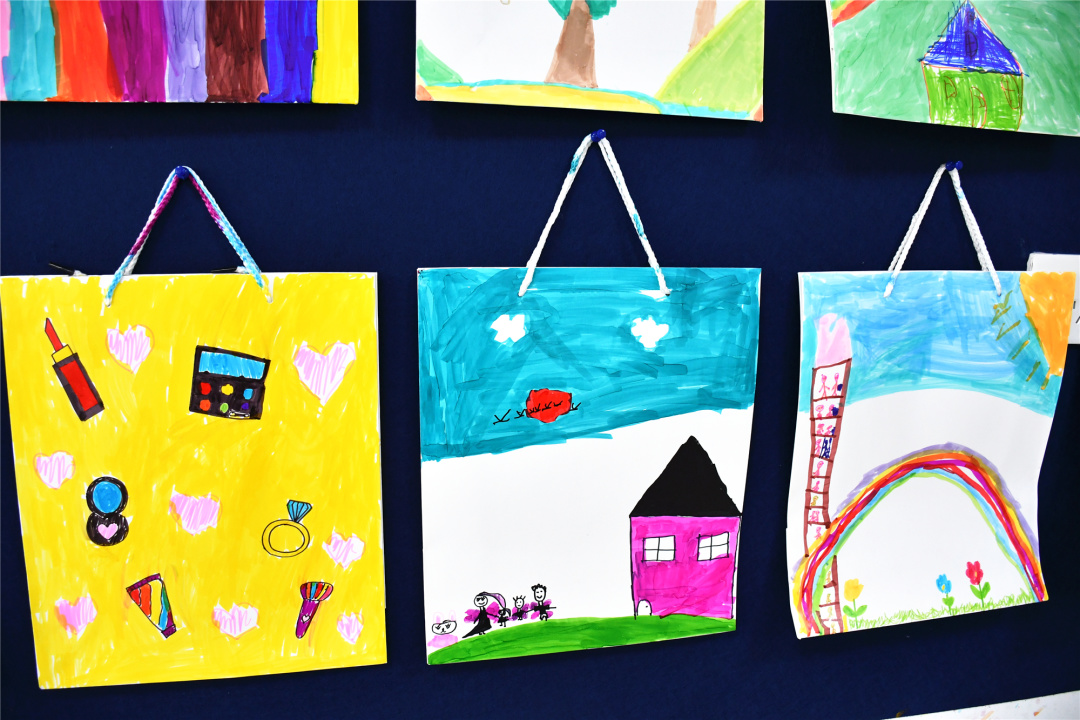
小学部学生艺术课上为全体女教师绘制“女神节”礼物袋
In its purest form art is a tool of communication with the potential of providing us with a unique and honest portrayal of the world around us, as well as the world within.
从本质上说,艺术是一种交流工具,为我们描绘周围世界独特而真挚的本质。

An interesting story. At the beginning of school, I left an assignment for the children and asked them to draw two works, one is art that they understand, and the other is not-art. The picture below was specially displayed at OCIS Gallery because I want to tell students that they should open up their understanding of art. It is often not a work of art, and if it is presented in a special form, it can also be regarded as a work of art. Therefore, I hope I can lead the children to reconstruct their understanding of art.
一个有趣的故事,在开学初期,我给孩子们留了一项作业,让他们画两幅作品,一个是他们理解的艺术,一个是非艺术。下面这幅图,我在OCIS画廊特意展示出来的,因为,我想告诉学生,应该开放对艺术的理解。往往不是艺术的作品,如果以特殊的形式呈现,也可被视为艺术作品。所以,希望我可以带领孩子们重构对艺术的理解。
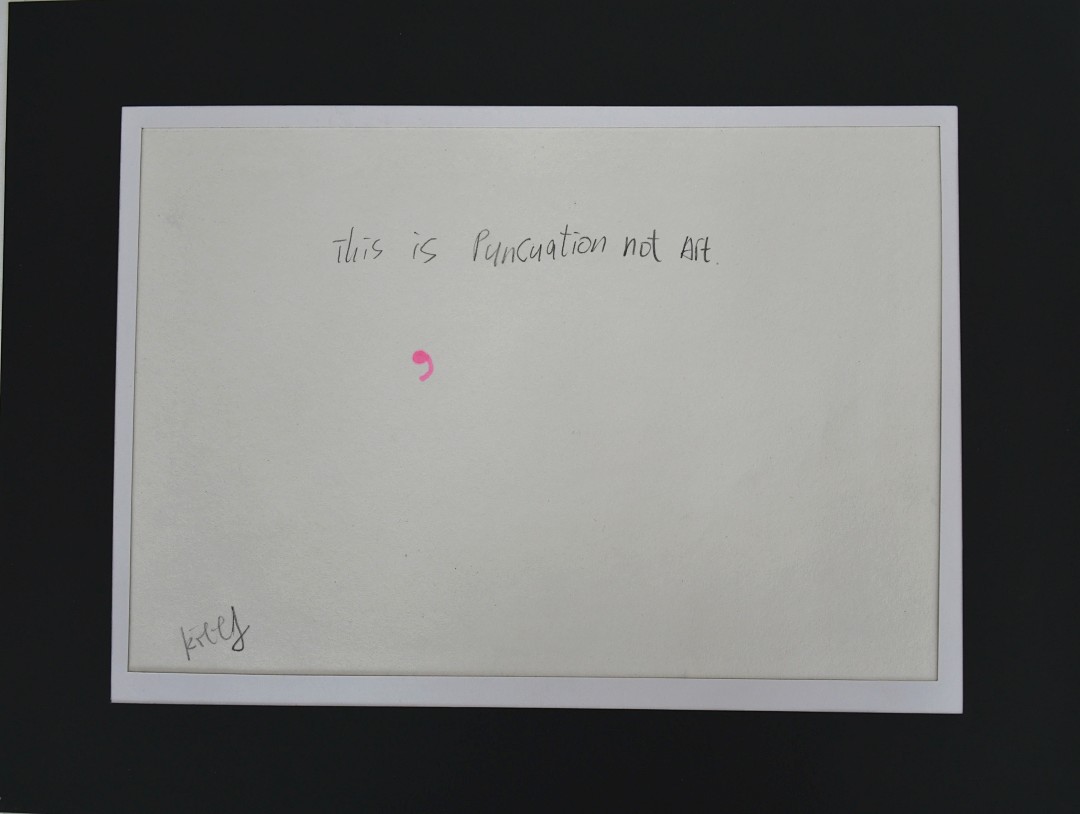
学生“非艺术”作品展示
Why do we make art?
我们为什么要进行艺术创造?
“Art should be about ALL that finds a place in the mind of man”
Georg Wilhelm Friedrich Heg
“艺术应该关于所有在一个人的思想中能呈现出的东西”。
(德)格·威·弗·黑格尔
Why should art only be about what is beautiful?
Especially when we all have very different ideas about what beauty actually is?
为什么艺术仅限于展示美丽?特别是在我们对美实际上有不同想法的时候?



Art is being used to be critical to society, to document what goes on around us, and to show what it means to be a human being at different times in history...
艺术对社会至关重要,它记录了我们周围发生的一切,并表明了在历史的不同时期作为人类的意义。



Art is also about self-expression, and if the artist creates with total honesty and integrity, the result will be a unique expression.
艺术也与自我表达有关,如果艺术家以完全的诚实和正直创造艺术,那么结果将是非常独特的表达。
What’s the main objective of art courses for OCIS primary?
OCIS小学部艺术课程的培养目标是什么?
PERSONAL LANGUAGE
艺术是一种个人语言
Everyone can make art, even those without innate talent or professional training, but few of us are able to turn our observations or imaginings into art as easily and naturally as a child.
每个人都可以进行艺术创作,即使没有天赋或者经过专业训练,但是只有少数可以将我们的观察或想象轻松而自然的转化为艺术品,就像孩子一样。

At the same time a child’s expressiveness is fragile. When art teachers assign projects with strict parameters or emphasize technical perfection, the natural creativity can quickly turn to conformity, especially when it comes to the younger students.
同时,孩子的艺术表现是脆弱。当美术老师安排严格规则的创作任务或强调技术专长时,自然创造力就会迅速转变为合规性,尤其是对于年纪较小的学生。




For these students (G1-4), it should first and foremost be about developing their creativity, as well as channeling their interior worlds into art, often using “Free-form creation”, where the teacher acts more like a guide; someone that can challenge and encourage them.
对于这些学生(1-4年级),最重要的是发展他们的创造力,以及将其内心世界与艺术联系起来,经常进行“自由创作”,,而此种情况,更多的是需要教师进行引导,不断激发和鼓励学生。



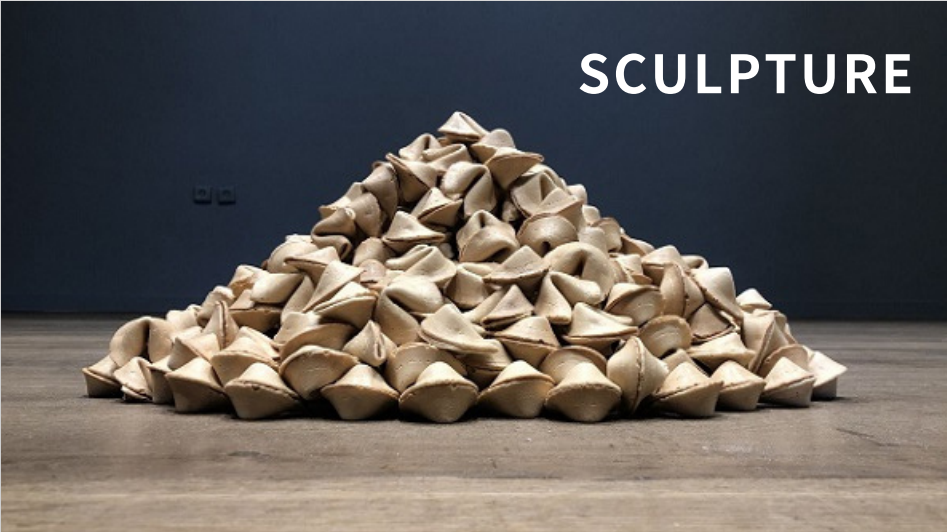
Relevant pieces form modernism and the contemporary period (after 1962) will be presented as inspiration for each weekly project, although indirectly (without too much additional information) for Grade 1 to 4.
However, no direct copying form photos or already existing artworks will be allowed, as this will interfere with the development of a personal artistic language. Stylistic similarities are of course inevitable, but individual thinking should be nurtured, encouraged and rewarded.
现代主义和当代(1962年以后)艺术的相关内容每周都会作为启发项目提供给学生,尽管对于1-4年纪的学生没有额外补充太多信息,但是,不允许学生直接从照片中或已经存在的艺术品中进行复制,因为这样会干扰个人艺术语言的发展。风格上的相似之处是课程不可避免的,但应培养,鼓励和奖励个人思想。




WHY RATHER THAN HOW
为什么比如何做更重要
For grade 5 and 6 each project will be a bit more structured. It will be about why, rather than just how. More detailed information on art history will be given, and the question what is art? Will be the starting point for the whole curriculum; by that challenging each students perception about art.
对于5-6年纪,每个课程项目的结构都会有所调整。更多探究艺术的根源,而不是仅仅是如何创造艺术。课程上,老师将提供有关艺术历史的更多详细信息,而核心问题“艺术是什么?”将成为整个课程的起点;以此激发每个学生于对艺术的认知。



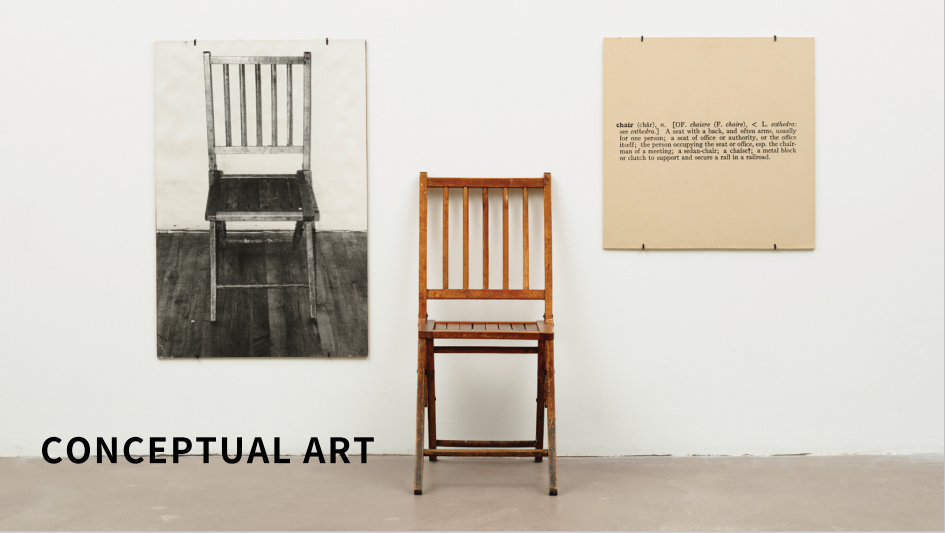
Personal expression will still be the goal, but for grade 5 and 6 it will also be about increased understanding and critical thinking.
For me as teacher, the main objective will be to help each student become more self-aware, empathic and collaborative, as well as cultivating creative thinkers, not necessarily professional artists.
激发个人表达仍作为授课目标,但对于5-6年级的学生来说,要加强对艺术的理解和批判性思维。
作为老师,主要目标将是帮助每个学生增加自我认知和感情投入,培养协作精神和创意思维,而不必成为专业的艺术家。




Taking the recent curriculum content of Grade 5-6 as an example, students will use the superposition and reconstruction of basic geometric shapes and organic shapes, starting with sketching, and then in the form of collage to create works.
以近期5-6年级课程内容为例,学生会利用基本几何图形和自然图形的叠加与重构,利用素描起始,进而进行粘贴画的形式,进行绘画作品的创作。

The purpose of this course is to help students learn specific shapes and identify them in the environment; To create original works of art using these
shapes. And to see how the same picture can change when using different techniques and materials.
这项课程的目的是帮助学生学习特定的形状并在环境中识别他们;用基础形状创造原创的艺术作品,并学习通过不同的表现手法和材料呈现不同的艺术效果。

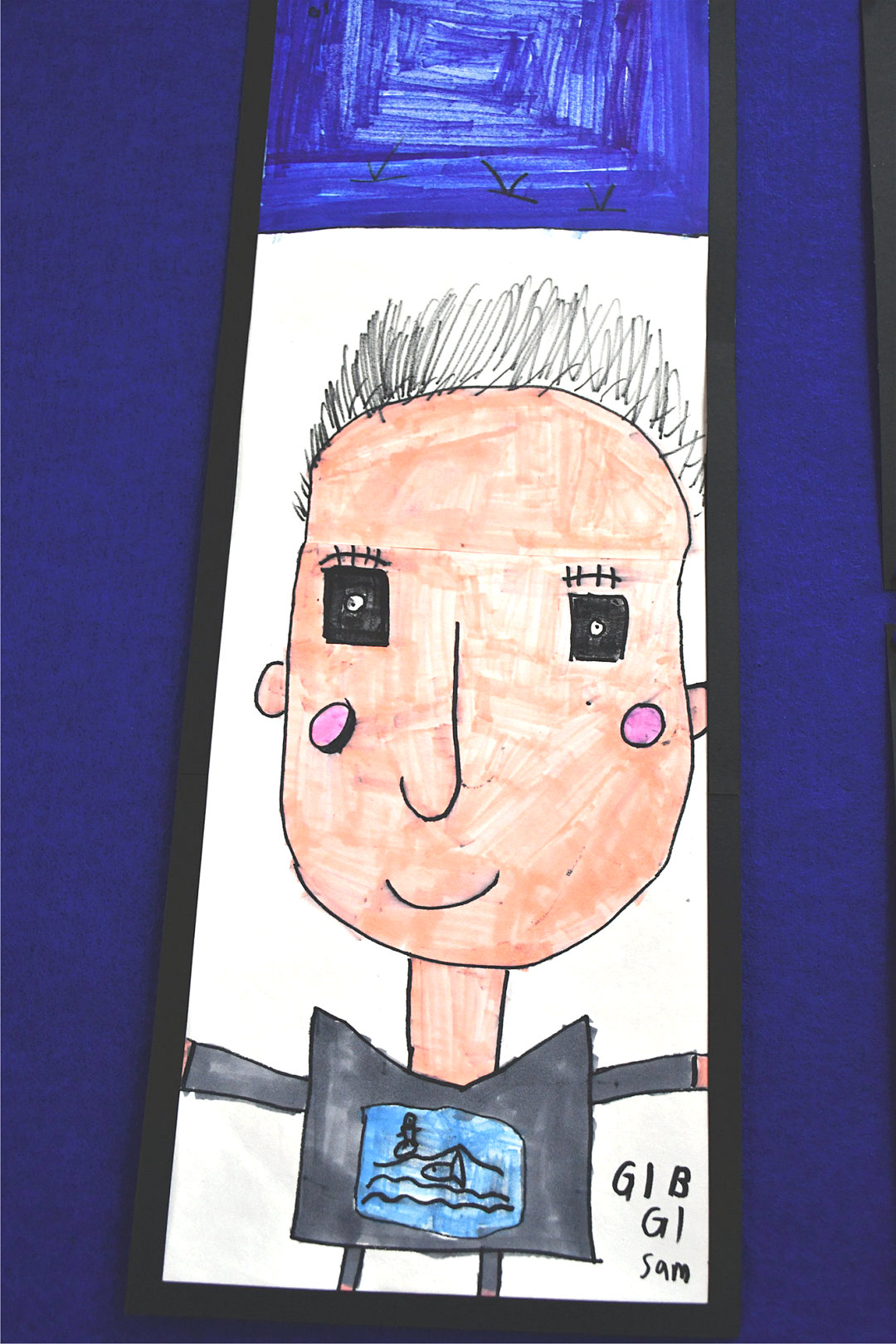

In addition, every month, the art teachers will award the best art-piece of the month at the primary school assembly. In your eyes, it may not be the most beautiful work, and its color and composition may not be professional. But in Ms. Stein's eyes, this work may reflect the child's deep understanding and expression of art, which is the most honest and creative language.
最后,艺术老师每个月都会评比出本月最佳作品,在小学部集会进行颁奖。也许在你的眼中,那不是最美的作品,它的色彩和构图也许并不专业,但在Stein老师眼中,这副作品可能反映了孩子内心深处对于艺术的理解与表达,那是最真挚和富有创造力的语言。

4月最佳
Best of April

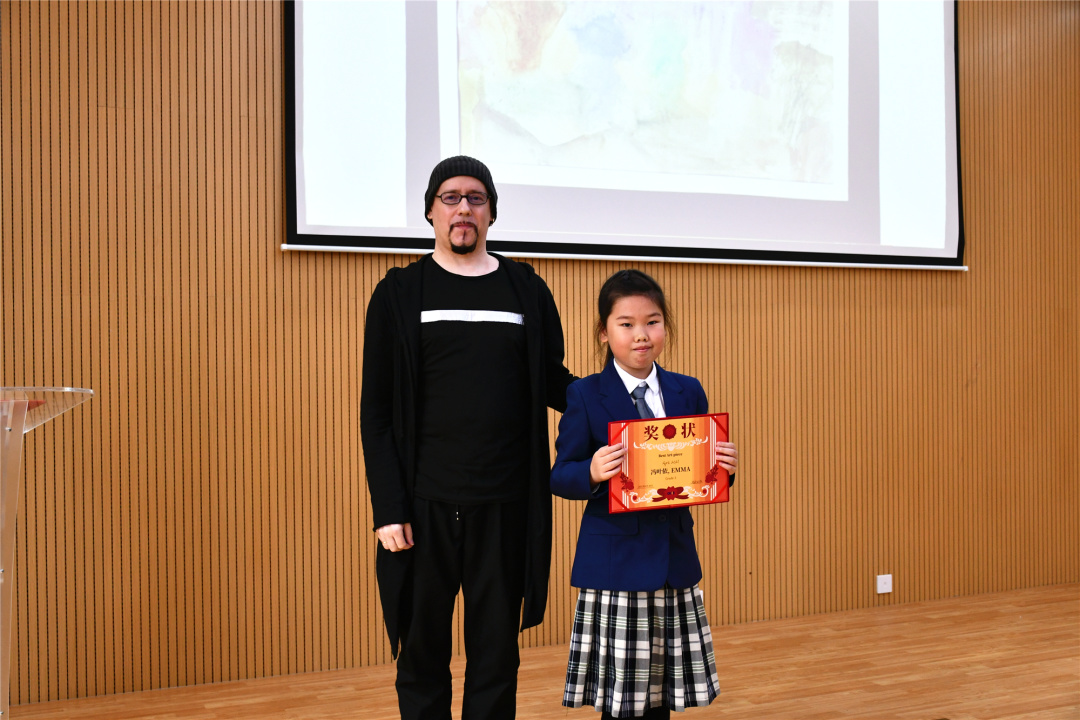


—OCIS小学部艺术画廊开幕啦—
Stein老师精心布置小学部艺术教室外围,展示最有创意、特色的绘画作品。我们准备了精美点心和果汁邀请所有小学部师生参加画廊开幕仪式,鼓励大家重视艺术学习,真心投入,享受艺术与美带给生活的乐趣。
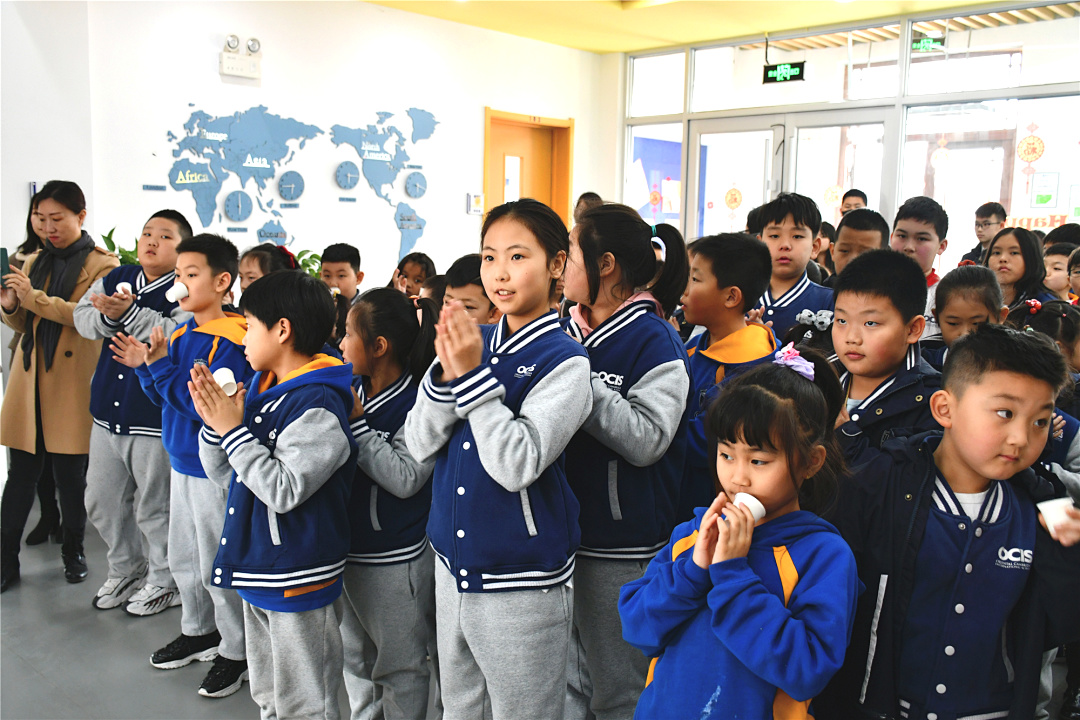


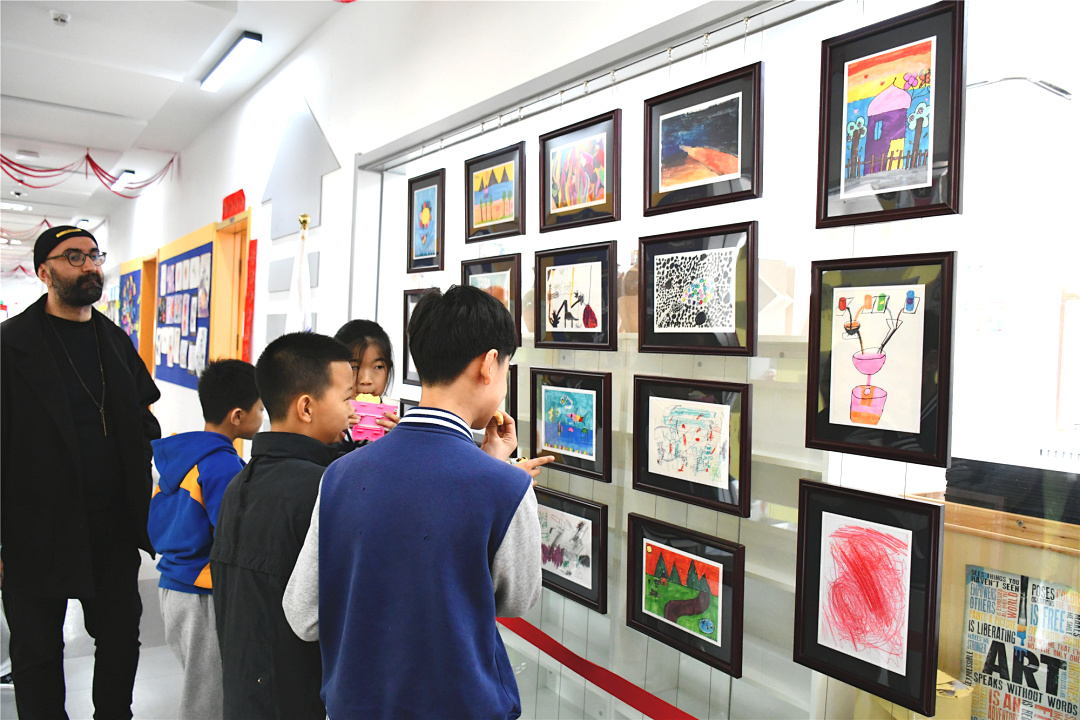

画廊精彩作品持续更新中


